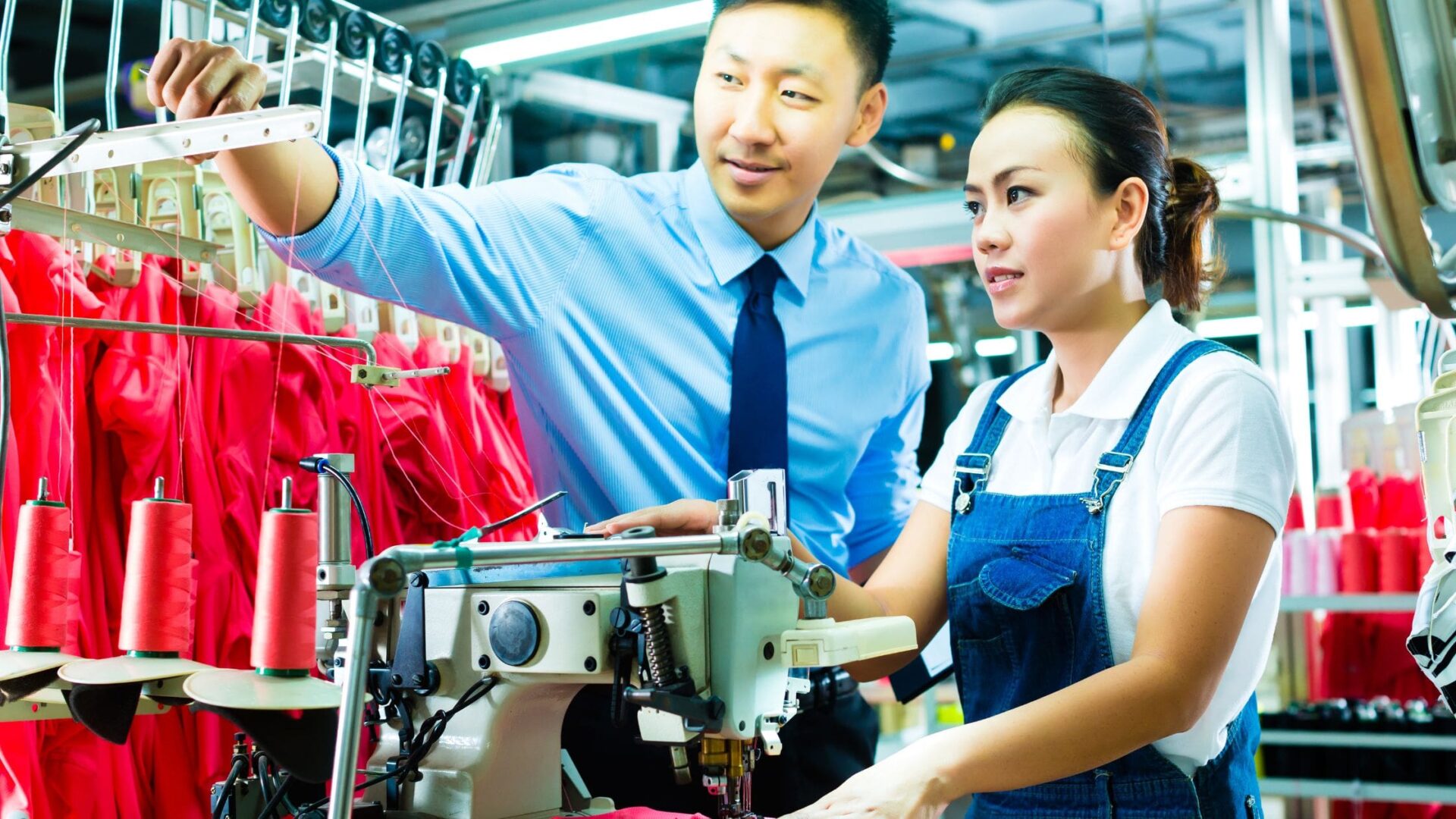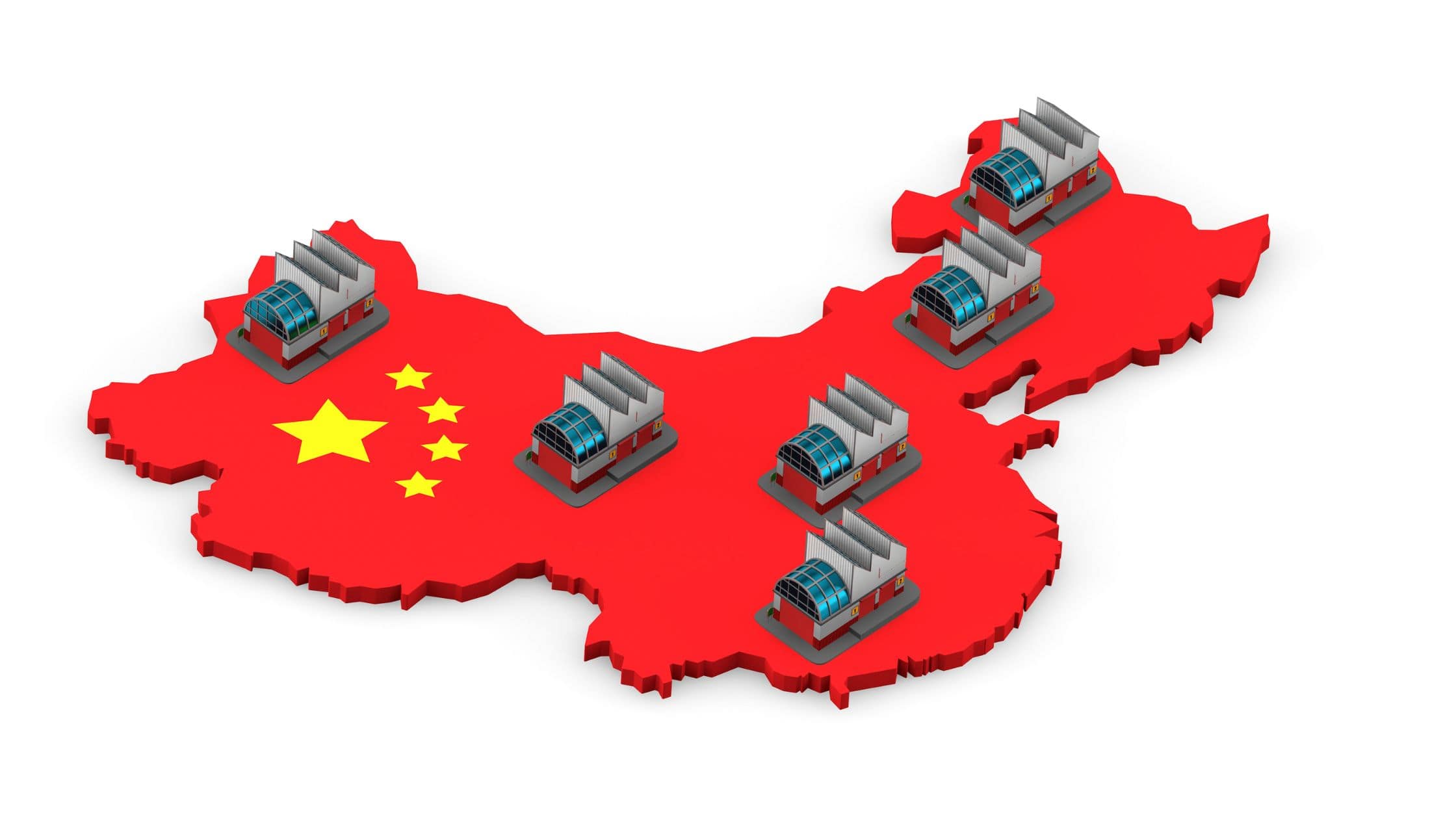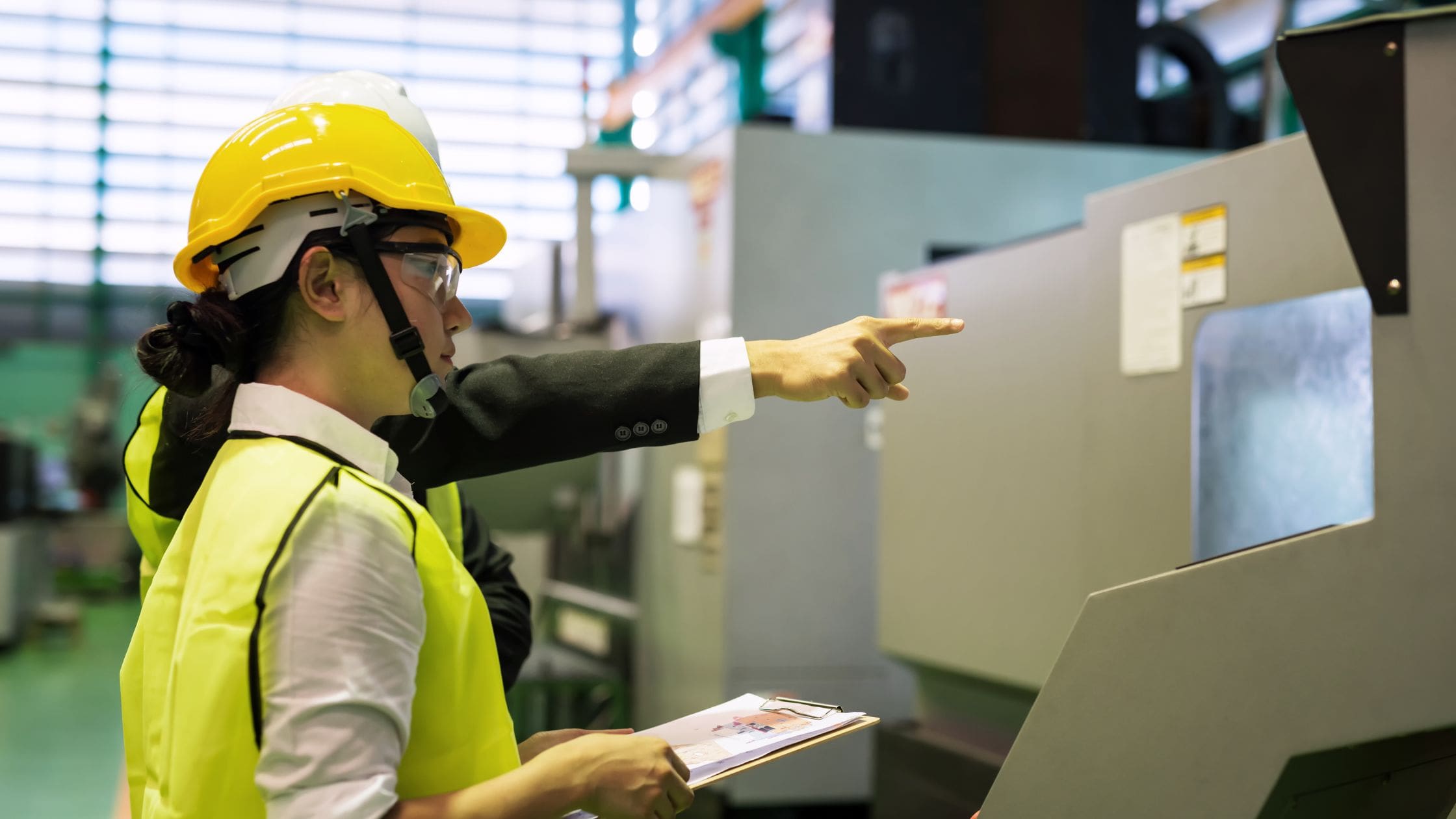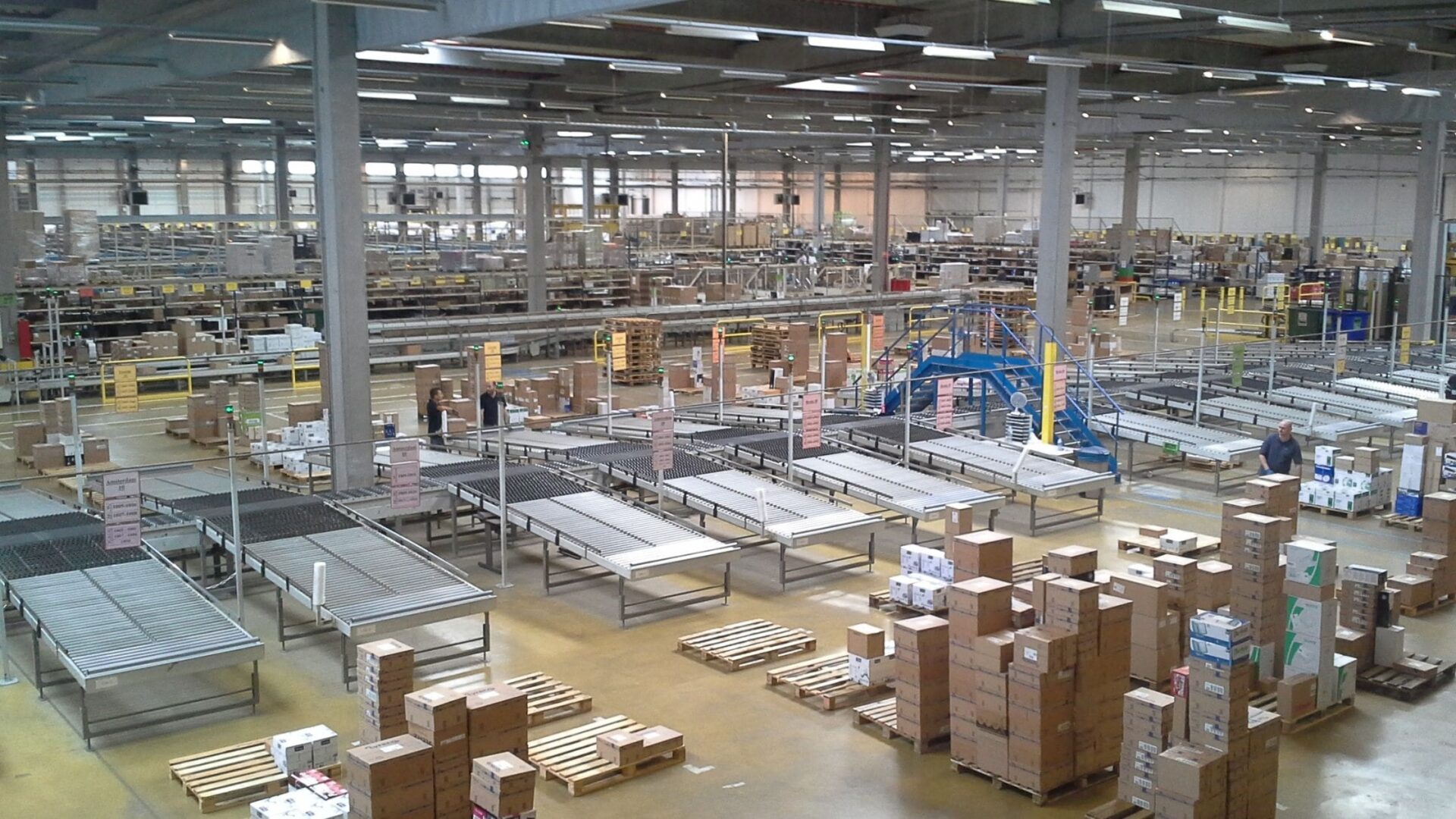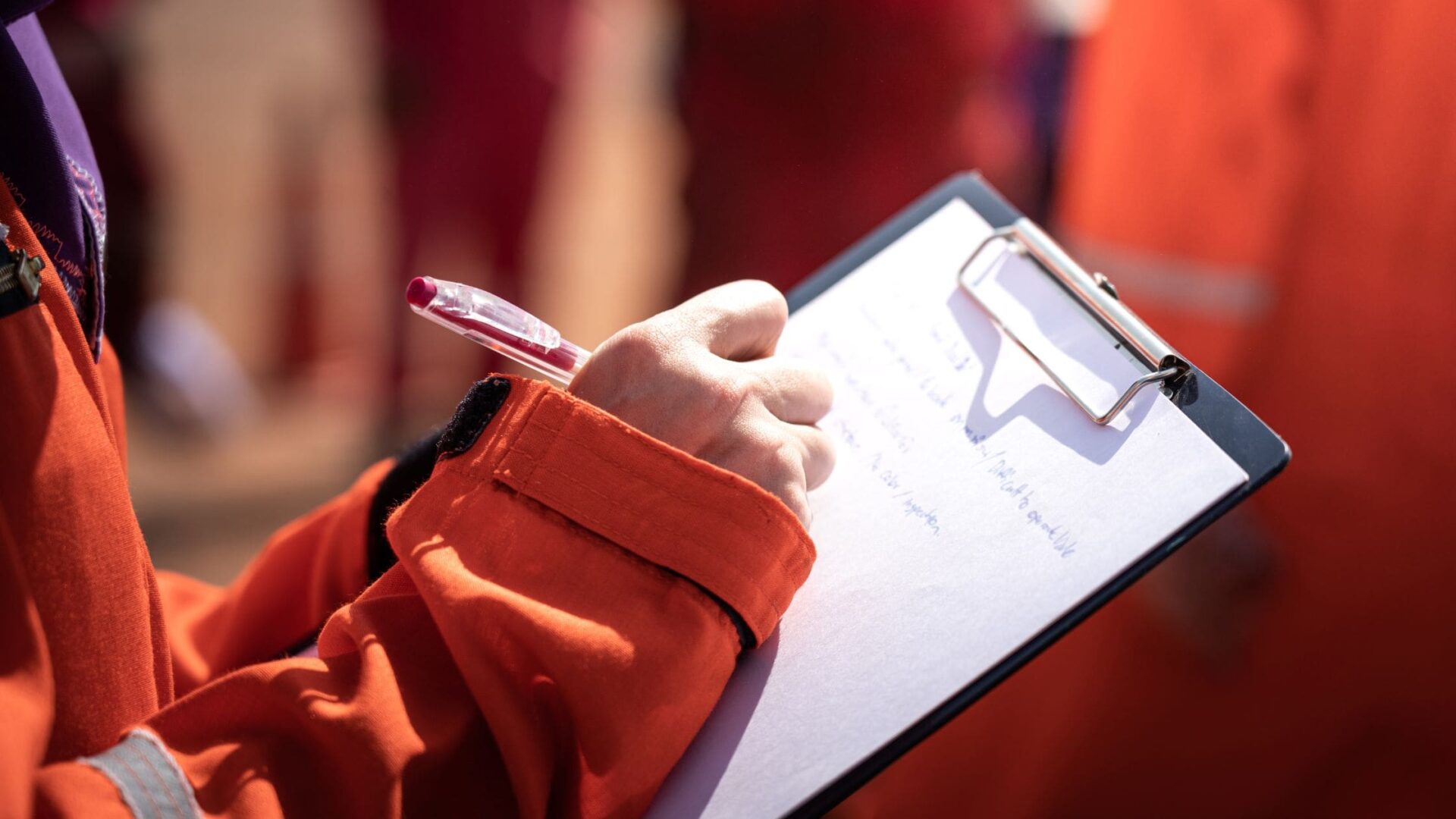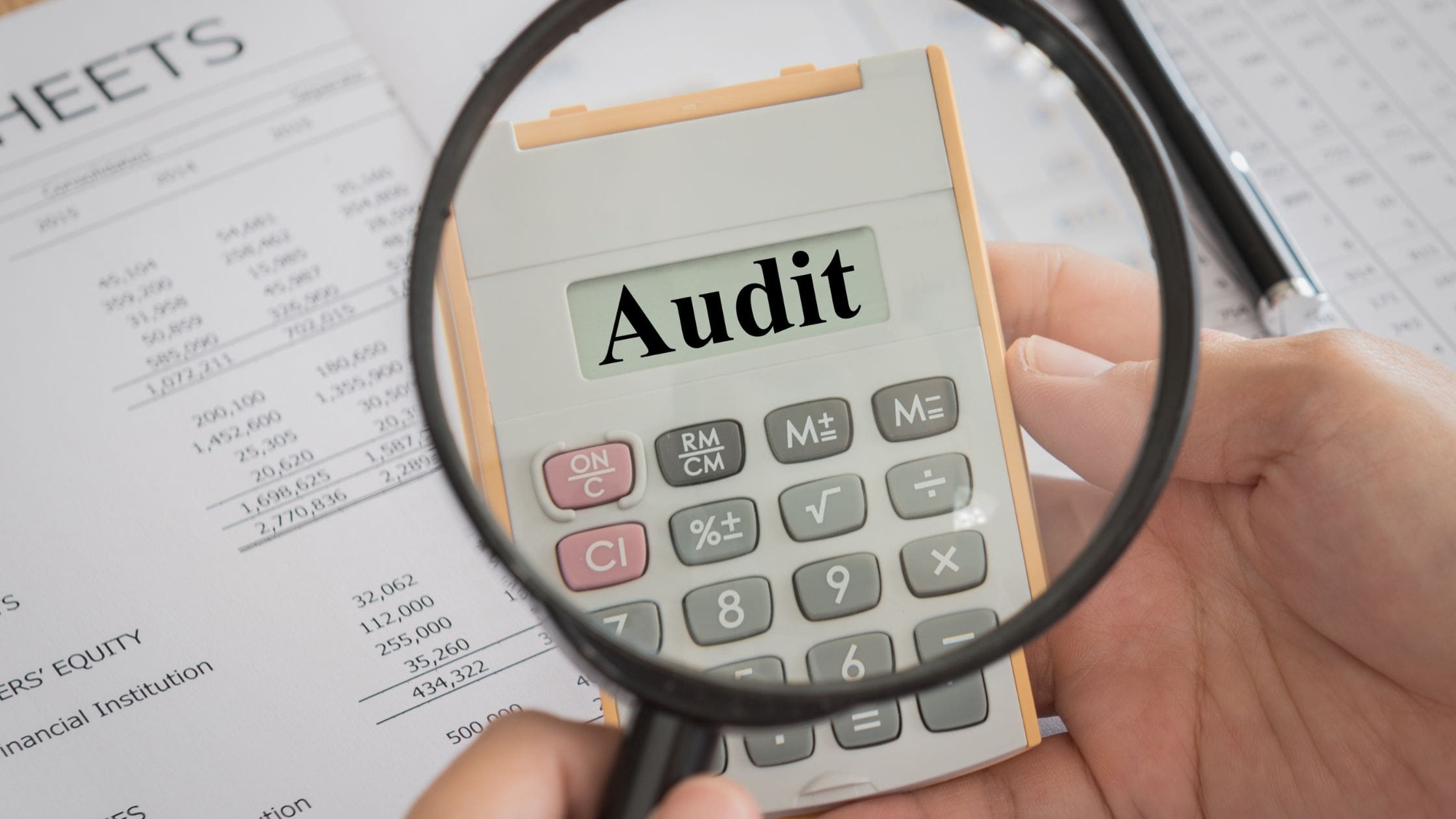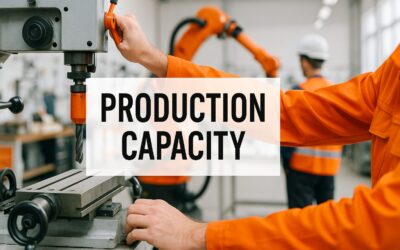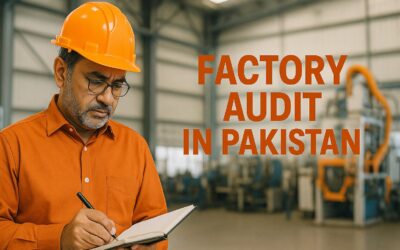If you’ve ever tried sourcing from China, you already know it’s not just about finding a supplier, it’s about finding the right one. On the surface, many factories can look nearly identical. They offer the same products, similar prices, and polished presentations. But once you dig a little deeper, the gaps in quality, compliance, and business practices start to show. That’s where factory audits come in, they give you a clear picture of who you’re really working with before any serious commitments are made.
Audits help you do more than check boxes. They help you avoid the hidden traps: poor working conditions, fake documents, missed delivery deadlines, or even worse, shadow factories quietly subcontracting your orders without telling you. A structured audit gives you the chance to verify product quality, assess risk, and confirm that your supplier meets global standards like ISO 9001. It’s one of the most important steps in protecting your brand and ensuring your supply chain is built on real capability, not empty promises.
In this article, we’ll focus on how factory audits in China actually work, when to use them, and how they can help you make smarter, safer sourcing decisions.
What is a Factory Audit in China?
A factory audit in China is a structured, on-site or remote evaluation of a manufacturer’s facility, workforce, documentation, and production processes against agreed standards. Whether you’re sourcing electronics or textiles, a proper supplier audit examines every critical aspect of the factory’s operations, including working conditions, safety standards, and environmental regulations.
Auditors typically follow customized checklists based on ISO 9001, industry best practices, and client-specific requirements. They tour the site, interview key staff, review operational documents, and issue a detailed report outlining strengths, weaknesses, and areas of concern. Unlike product inspections or lab testing, which assess the goods, a factory audit evaluates the company as a whole, its capabilities, compliance standards, and commitment to consistent quality control.
Research, including a peer-reviewed study from Monash University, shows that higher audit scores strongly correlate with improved product quality.
These evaluations can be conducted by you, your internal team, or trusted third-party audit services. A full audit typically spans 2–5 days, covers 400+ checkpoints, and costs around US $209 per auditor-day. Leading firms like SGS, Intertek, and Bureau Veritas provide localized audit services in China, tailoring assessments based on buyer objectives, industry, and regulations.
Why are Factory Audits Essential When Sourcing from China?
Quality assurance, compliance, risk reduction, cost efficiency, supplier verification, trade capacity, production capability, quality control, and brand protection are some of the most important reasons to conduct a factory audit when sourcing from China. As global sourcing becomes more competitive and complex, you need visibility into how your manufacturing partners operate. A factory audit offers that visibility by providing a complete, unbiased view of a company’s operations, production processes, and business practices.
Below are key benefits of conducting audits in China:
Verify Supplier Commitment: Suppliers who reject audits often hide structural or compliance issues.
Identify In-House & Outsourced Processes: Clarify which operations are truly in-house versus subcontracted.
Confirm Certification Authenticity: Validate licenses and ISO 9001 documents to ensure legitimacy.
Predict Product Quality via Audit Scores: Strong correlation between high audit scores and fewer defects.
Strengthen Process Discipline & Continuous Improvement: Encourage suppliers to meet evolving quality standards.
Reduce Costly Defects and Rework: Early detection saves you time, money, and materials.
Avoid Shipment Delays & Contract Breaches: Spot workflow bottlenecks and capacity mismatches.
Safeguard Brand Reputation from Ethical Violations: Ensure alignment with social compliance frameworks.
Optimize Total Cost of Ownership: Uncover risks that drive hidden costs in sourcing.
Prevent Large Financial Losses: A case study showed $100,000 saved by canceling an uncertified supplier.
What are the Potential Problems If You Skip Factory Audits in China?
Skipping factory audits in China opens the door to major issues that could severely impact your supply chain, customer relationships, and bottom line. Without audits, you have no way to verify whether a factory is meeting safety standards, complying with labor laws, or even producing your order in-house. This lack of verification increases exposure to fraud, inefficiency, and reputational damage
Poor Quality Products & High Defect Rates: Without quality control checks, product consistency deteriorates.
Hidden Safety Hazards for Workers: Factories may bypass basic occupational safety measures.
Non-compliance with Local or International Regulations: Leads to potential legal penalties and blocked shipments.
Delayed Shipments & Missed Launch Windows: Production issues are caught too late, affecting delivery timelines.
Unexpected Capacity Shortfalls & Bottlenecks: Factories may overstate their manufacturing capabilities.
Supply-Chain Disruptions from Sub-contracting: Subcontracted work often escapes oversight.
Legal Penalties, Recalls, or Import Holds: Result from violations of compliance standards.
Damage to Brand Equity & Customer Trust: Once customers receive defective or unsafe products, loyalty suffers.
Inventory Imbalances: Stockouts or overproduction create warehousing and cash flow problems.
Escalating Operational Overheads: Internal teams are forced to correct issues after the fact.
What Happens During an On-Site Factory Audit in China: Examination Steps?
On-site factory audits in China typically follow a structured six-step process that begins the moment the audit team arrives at the facility. The steps include an opening meeting, a detailed facility tour, documentation review, sampling of production processes, confidential interviews with employees, and a final closing briefing where preliminary scores and corrective actions are discussed. This sequence is designed to cover every major component of the factory’s management systems, infrastructure, and workforce compliance.
Today’s factory audit services use advanced tools to enhance visibility and accuracy. Where permitted, auditors capture visual evidence with drones or 360-degree cameras and upload the content into digital platforms for real-time analytics and same-day reporting. This approach supports greater transparency across supply chain evaluations and adds credibility to the final audit report.
A typical supplier audit lasts between two and five days and examines over 400 unique checkpoints across quality standards, safety protocols, environmental compliance, and labor practices. Each area is scored individually, then weighted based on risk severity and importance to your product specifications. These results help you assess whether the facility meets both local regulations and international quality management benchmarks.
Factory Tour and Infrastructure Assessment
The facility tour during a factory audit serves as a hands-on inspection of the physical site, equipment, and supporting infrastructure. You’ll want to evaluate the building structure, layout, lighting, and safety signage, as well as ensure the workspace is clean, organized, and compliant with industry standards. Pay close attention to machinery condition, especially whether critical equipment is properly calibrated and whether maintenance logs reflect usage patterns that match production volume.
Emergency-exit accessibility, fire-safety systems, and alarm setups should be reviewed thoroughly. Auditors also examine electrical panels, machine guards, and evacuation routes to ensure alignment with national safety standards. If backup generators or purified-water systems are present, they should be tested to confirm proper function under load.
Ventilation systems must meet minimum airflow requirements to protect product integrity and safeguard workers. Cross-checking workforce headcount with historical attendance data can uncover issues like high staff turnover or insufficient coverage, both of which can lead to process instability and increased quality risks.
Employee Interviews and Documentation Review
Interviews with factory employees and thorough documentation checks are essential to validate compliance and ensure that written procedures reflect actual business practices. During this phase, auditors request access to key files including business licenses, ISO 9001 certifications, employee payroll records, timecards, and training documentation. These documents help confirm that the factory complies with local labor laws and international compliance standards.
Confidential interviews are conducted with a randomly selected group of workers. These discussions confirm whether workers receive accurate wages, overtime pay, and social-insurance benefits as required by law. Cross-verifying reported hours with payroll data helps detect hidden violations such as excessive overtime beyond the legal 36-hour monthly limit.
You should also confirm license authenticity through the Chinese National Enterprise Credit Information Publicity System and ensure that all required certifications, such as CE, FCC, UL, RoHS, and CCC, are up to date. Reviewing the organization chart adds context to who is accountable for which functions within the factory management team.
Review of Production and Quality Control Processes
During this stage, you should observe multiple assembly lines, inspect how raw materials are stored, and evaluate in-process quality control stations. Well-established manufacturing partners typically maintain clean, labeled areas for incoming components, and they implement procedures that ensure only verified materials are fed into production.
Auditors often review two complete production runs to compare actual workflows against planned documentation. This helps you assess consistency in output and detect bottlenecks in manufacturing operations. Each product batch should have a unique identifier within the factory’s digital tracking system to support traceability in case of product recalls or certification issues.
You’ll also want to examine defect-rate reports, first-pass yield charts, and records of corrective actions. These are strong indicators of a factory’s commitment to quality improvement. Factories using statistical process control dashboards and equipment monitoring tools often produce more consistent results. For safety-critical items, pulling random product samples for independent lab testing adds an additional layer of due diligence. When automation replaces manual steps, dimensional accuracy tends to improve, so evaluating automation levels can help you forecast potential efficiency gains or risks in quality variation.
Capacity and Lead Time Evaluation
A capacity and lead time evaluation covers daily output rates, labor shifts, equipment utilization, and documented lead-time commitments. You need to verify whether current performance supports your expected order sizes and delivery schedules without risk of delays or unplanned rescheduling.
During this phase, compare stated capacity against recent throughput levels. If utilization regularly exceeds the 85 percent threshold, the factory may face delays in ramping up production for large or urgent orders. Bottlenecks are common in older facilities with under-maintained machinery or limited raw-material stock, so these should be flagged during the audit.
Inventory levels of raw materials, work-in-progress, and finished goods should reflect disciplined material planning. A mismatch between production forecasts and actual inventory turnover can signal problems in demand forecasting or procurement coordination. Finally, examining staff turnover over the past 6 to 12 months helps predict whether the factory can maintain consistent headcount during peak cycles.
What Types of Factory Audits Are Conducted in China?
Several distinct categories of factory audits are commonly used in China, each tailored to a specific purpose in the sourcing process. You might request an initial factory evaluation to screen new suppliers or a technical audit to measure production capability and process discipline. Some audits focus on social compliance, environmental performance, or readiness for production. Each type plays a unique role in improving quality, reducing risks, and ensuring alignment with international standards.
Certain U.S. buyers also commission Customs-Trade Partnership Against Terrorism (C-TPAT) audits to assess security protocols in cargo handling and supply chain operations, especially for shipments bound for U.S. ports.
Initial Factory Evaluation
An initial factory evaluation is usually the first step in vetting a new manufacturing partner. This type of audit provides a comprehensive overview of the factory’s business profile, export experience, employee count, key production equipment, and legal compliance with local regulations. It’s especially useful when you’re exploring relationships with factories you’ve never worked with before.
During the audit, evaluators also review quality manuals and inspect documentation that reflects the company’s operating procedures. This helps you understand whether the supplier meets baseline quality assurance expectations. Creditworthiness checks using third-party financial databases are often included as part of the due diligence process. These evaluations give you insight into the factory’s solvency and long-term viability.
Technical/Quality Control Audit
A technical or quality control audit goes beyond the basics and focuses specifically on how well the factory manages production quality, equipment readiness, and internal process discipline. You’ll find this audit especially helpful if your product has tight tolerances, high compliance requirements, or safety-critical features that demand consistent control.
This audit dives deep into several key areas: equipment calibration records, preventive-maintenance programs, technician qualifications, and defect-rate history. It also reviews internal quality control processes such as statistical process control charts and failure-rate analysis. A robust audit will check whether the factory maintains a supplier-quality-rating system to evaluate its own upstream partners.
These audits often follow a 400-point checklist based on ISO 9001 standards. The results are typically presented as a percentile score, which correlates closely with the factory’s predicted first-pass yield. That score gives you a quantifiable metric to compare across potential suppliers.
Social Compliance Audit
A social compliance audit focuses on how a factory treats its workforce and whether it meets ethical standards for labor. This type of audit is essential if you want to ensure your supply chain aligns with international expectations and human rights regulations. Key areas examined include child-labor prohibition, working-hour logs, wage slips, grievance channels, and occupational health and safety conditions. These elements are typically assessed against frameworks like SA 8000 or the BSCI code of conduct.
You should also verify that the factory offers anti-discrimination and harassment prevention training. Freedom-of-association policies and access to independent grievance mechanisms are additional indicators of fair labor practices. Auditors often inspect dormitory accommodations to confirm that conditions meet hygiene, privacy, and space standards. Together, these checks provide valuable insights into how the factory manages its responsibilities to workers and how it aligns with global business practices.
Environmental Compliance Audit
An environmental compliance audit reviews a factory’s environmental impact and whether its operations align with local laws and international environmental standards. Key areas of focus include wastewater treatment permits, air-emission control records, hazardous-waste handling protocols, and overall energy consumption metrics. These components are often benchmarked against ISO 14001 environmental management system standards.
To maintain compliance in China, factories must retain hazardous-waste manifests for a minimum of three years. You should ensure these records are accessible and properly maintained. Auditors also evaluate how materials are stored, whether waste is classified correctly, and if disposal methods are consistent with approved guidelines. Facilities that track energy usage and implement sustainability measures tend to operate more efficiently and reduce long-term environmental risks. In today’s sourcing environment, sustainability is no longer optional, it’s a business requirement.
Digital vs Physical Audits
Digital and physical audits each offer distinct advantages, and the choice between them often comes down to cost, urgency, and level of risk. Remote audits typically cost around $100 per report and allow you to review factory data quickly, making them ideal for low-risk orders or initial screening. Physical audits, on the other hand, average $265 per day plus travel and provide hands-on verification, making them better suited for high-value production or complex supply chain arrangements.
Best-practice virtual audits should feature an uninterrupted live feed showing the full production flow, from raw-material intake to finished-goods storage. Screenshots or recordings should be archived as part of the audit report. However, remote methods rely on media provided by the factory, which means you’ll miss physical cues like odors, temperature, or unspoken staff behaviors. To reduce staging risks, always include chemical storage areas and waste-handling zones in your visual coverage.
Pre-Production Audit
A pre-production audit is conducted after tooling approval but before mass production begins. This is a critical checkpoint to verify that the factory is fully prepared to execute your order according to agreed standards. You’ll use this audit to evaluate material sourcing plans, inspect production readiness, and confirm that preventive-quality measures are in place. It’s one of the most practical ways to reduce early-stage errors that could later affect product quality, delivery timelines, or certification outcomes.
During the audit, you should check that raw materials match the specifications outlined in your purchase order and that suppliers have properly documented their sourcing. Review the factory’s production processes, including work instructions, quality control checkpoints, and staff training programs. A well-prepared manufacturer will demonstrate understanding of product requirements and show that corrective action plans are already embedded in their workflow.
During Production Audit
A during production audit takes place while manufacturing is actively underway, often when 20 to 50 percent of the order is complete. This audit helps you catch problems early, before the entire batch is finished. It focuses on reviewing in-process quality control activities, analyzing the first-article samples, and verifying that process controls are being properly followed.
By evaluating actual production instead of relying solely on plans, you can identify inconsistencies between the documented workflow and what’s happening on the factory floor. If issues are detected, such as improper equipment setup, uncalibrated tools, or operator errors, they can be addressed in real time, which helps avoid broader defects or shipment delays. Auditors will also verify that the company’s quality assurance team is using inspection data correctly to make process adjustments.
Pre-Shipment Audit
A pre-shipment audit is performed when at least 80 percent of the goods have been packed and are nearly ready for delivery. Its main purpose is to verify that final products meet the agreed specifications, that packaging is secure and compliant, and that carton labeling aligns with customer or regulatory requirements. This is your last opportunity to catch quality issues before the shipment leaves the factory.
Auditors check random units using statistically valid sampling methods, reviewing product dimensions, appearance, functionality, and labeling. They’ll also inspect packaging for strength, durability, and any signs of improper sealing or stacking. Any non-compliance found at this stage could trigger rework, production holds, or additional checks before payment is released. This audit is particularly important for high-value or time-sensitive products where failure to meet expectations could lead to reputational or financial damage.
How To Prepare for a Factory Audit in China?
If you want your factory audit to produce meaningful and actionable results, it starts with careful planning. Preparing ahead gives you control over the audit flow, reduces surprises, and increases the effectiveness of your time on-site.
Begin by collecting background materials, such as quality reports and certifications, and clearly define the objectives of your supplier audit. Whether you’re verifying ISO 9001 compliance, assessing environmental regulations, or evaluating product quality, every goal should translate into measurable checkpoints. Familiarizing yourself with the factory’s business practices, production processes, and historical performance helps you tailor the audit to the most critical risk areas.
Audit preparation also includes legal validation of company documents, supply chain verification, and digital review of past audit reports. By knowing what to expect before you arrive, you’re in a better position to assess their manufacturing capabilities, ethical standards, and alignment with your sourcing requirements.
Gather Background Information
The first step in preparing for a factory audit is to gather and review as much relevant background information as possible. Ideally, request documents from the factory two weeks before your scheduled visit. These may include certifications like ISO 9001, standard operating procedures, past quality KPIs, and export transaction records. Reviewing these in advance will give you a clearer picture of how the factory manages its compliance standards and quality assurance systems.
Use Chinese corporate-registration portals such as qcc.com and the National Enterprise Credit Information Publicity System to confirm basic business data. You should verify the factory’s establishment date, registered capital, and legal representative. Additionally, checking the company’s tax registration can reveal whether it’s fully licensed to operate within China.
Scan forums or industry groups for buyer feedback related to delivery reliability or unresolved quality issues. Cross-referencing the physical location on Baidu Maps can also help you verify the site’s authenticity.
Define Audit Objectives
Once you’ve gathered background data, the next step is defining clear and focused objectives for your factory audit. Your goals should align with your broader business priorities, whether that means verifying product specifications, ensuring compliance with labor laws, or evaluating a supplier’s long-term capacity to scale. A well-structured audit plan eliminates ambiguity and increases the efficiency of your evaluation.
Convert your objectives into specific, measurable checkpoints. For example, if your goal is quality control, you should plan to evaluate quality management systems, document handling procedures, and inspection workflows. If you’re concerned about social compliance, then working conditions, grievance mechanisms, and payroll transparency should be prioritized.
Assign risk scores to each objective based on potential business impact. This allows you to decide how deeply to sample certain areas during your audit.
Choose the Right Audit Partner
Selecting the right audit partner is one of the most critical steps in preparing for a factory audit in China. You need a team with not only the technical ability to evaluate quality control processes and compliance standards, but also the cultural familiarity to operate effectively on-site. Start by checking whether the auditor holds ISO 9001 Lead Auditor or IRCA certifications and has at least five years of hands-on experience in your product category.
Assess their independence, industry expertise, and data-security protocols. You should also confirm that they can conduct interviews and inspections in both English and Chinese. A reliable auditor should have experience working across different factory sizes and business practices. Expect typical daily rates between $150 and $398, depending on complexity and location.
Create a Detailed Checklist
To conduct a thorough factory evaluation, you’ll need a well-developed checklist tailored to your business objectives. Your list should blend ISO 9001 clauses, customer-specific requirements, and industry-specific risks. This ensures your audit covers key areas like product specifications, environmental regulations, and ethical standards across the supply chain.
Using a digital checklist tool helps streamline your inspection workflow. Mobile audit apps that auto-score findings in real time can provide a clear record of supplier performance while also allowing for trend analysis over time. A good ISO 9001 audit checklist often includes over 400 detailed questions, helping you evaluate quality assurance, manufacturing processes, and corrective actions without missing important checkpoints.
Understand Local Business Practices
Understanding local business culture is essential if you want to conduct a productive factory audit in China. Building rapport with factory management sets the tone for cooperation. Start with respectful greetings, use proper titles, and bring a modest gift if appropriate, it shows professionalism and intent to build a long-term business relationship.
However, be aware that some factories may stage production areas or prepare scripted demonstrations. To get a more accurate picture of their day-to-day operations, you should plan random walk-throughs and conduct spontaneous interviews with employees. These unscripted moments often reveal details about actual working conditions, adherence to labor laws, and whether safety standards are being followed.
Being culturally aware while maintaining an investigative mindset allows you to detect inconsistencies and verify whether stated quality control practices are truly embedded in the daily workflow.
Leveraging Technology in Factory Audits
As factory audits in China grow more complex, using technology to improve efficiency and accuracy is no longer optional, it’s essential. You can now integrate tools that offer real-time data collection, predictive analytics, and verifiable reporting. For example, drones can be deployed to inspect solar panels installed on factory rooftops, an area often overlooked in traditional evaluations. Similarly, 360-degree camera walkthroughs help capture an immersive view of production processes, factory layout, and working conditions.
These digital records can be uploaded to a secure, cloud-based platform, timestamped, and stored as part of a transparent audit trail. Some advanced factory audit services now use AI-driven trend analysis to detect non-conformities across multiple audits, helping you take preventive actions before a major issue affects product quality or compliance.
What Ethical and Environmental Factors Should Be Evaluated in a Factory Audit?
You need to verify whether worker dormitories follow China’s national standards like GB 50837-2014, which outlines minimum space, hygiene, and safety requirements. At the same time, environmental evaluations should measure a company’s commitment to reducing emissions, managing waste, and improving long-term sustainability practices.
Both areas affect your brand reputation and can directly impact regulatory risk, especially as new compliance standards emerge in global markets. If your company sources from China, audits focused on ethical standards and environmental regulations are no longer optional, they’re a critical safeguard for your business and your customers.
Fair Labor Practices
When it comes to evaluating working conditions, fair labor practices are central to any supplier audit. You’ll want to examine several core issues: wage accuracy, legal working hours, written employment contracts, and grievance procedures. It’s also essential to verify if employees are given freedom of association and access to safe living environments when dormitories are provided.
One of the most effective strategies here is to conduct offline interviews with a random selection of workers. These conversations help validate whether wages are paid on time, whether social insurance contributions are made consistently, and if employees understand their legal rights under labor laws. This personal, ground-level insight is what separates surface-level inspections from deep factory evaluation.
Eco-Friendly Manufacturing
Sustainability in manufacturing is now a measurable component of global trade compliance. During your audit, you should assess whether a factory has specific programs to reduce waste, monitor carbon emissions, and improve material efficiency. Factories committed to environmental improvement often implement closed-loop water systems, introduce recyclable packaging policies, and document their annual emissions.
Check whether the manufacturer discloses its carbon footprint to align with frameworks like the EU’s Carbon Border Adjustment Mechanism (CBAM). Transparency in environmental reporting isn’t just a box to tick, it reflects how serious a supplier is about long-term cooperation and regulatory alignment.
What Should a Factory Audit Report Contain?
Once your factory audit is complete, the report becomes a vital reference for making sourcing decisions and initiating corrective actions. It’s not just about documentation—it’s about translating audit findings into clear, actionable insights that help you manage risk across your supply chain.
A comprehensive factory audit report should include the following core elements:
Executive Summary
-
- : A brief overview of the audit’s purpose, scope, location, and outcomes.
Scorecard: Numerical or color-coded grading to highlight overall performance against defined compliance standards.
Non-Conformity Matrix: Categorized into critical, major, and minor issues, showing severity and implications.
Photo Gallery: Visual proof of key observations, such as equipment condition or safety violations.
Root-Cause Analysis: Explanations for each non-conformity based on auditor findings and factory interviews.
Corrective-Action Plan: Detailed steps with deadlines, including who is responsible for each action.
Traffic-Light Dashboard: A visual summary of red, amber, and green flags for quick reference by senior management.
What are the Red Flags to Watch for During a Factory Audit?
Even the most organized factory visits can sometimes hide deeper risks, your role during an audit is to spot the signs of non-compliance that aren’t always obvious. Recognizing red flags early helps prevent disruptions to product quality, compliance failures, or brand reputation damage.
Common warning signs include:
Restricted access to certain areas like raw material storage or waste treatment zones.
Inconsistent answers from employees about wages, working hours, or safety protocols.
Missing documents such as equipment maintenance logs, material traceability records, or calibration certificates.
Falsified certifications or licenses that don’t match official records or ISO 9001 requirements.
Locked emergency exits or blocked fire escape routes, violating safety standards and labor laws.
Reluctance to photograph production processes or safety equipment.
Excessive overtime that exceeds legal limits or indicates labor exploitation.
Overly choreographed tours that avoid key areas or skip interaction with staff.
How Should You Evaluate and Report Audit Findings?
The way you evaluate and report findings affects everything, your decisions on supplier approval, your quality assurance strategy, and your ability to manage risk across the supply chain.
Start by assessing each observation against industry standards and compliance requirements like ISO 9001, local labor laws, and environmental regulations. Assign severity ratings and trace each issue to the relevant part of the production process. Your goal here is clarity, not complexity. You want your internal team and your suppliers to clearly understand what’s non-compliant, why it matters, and what happens next.
A detailed report not only strengthens your due diligence, it also becomes a benchmark to track supplier improvement over time. When done right, audit reports help maintain quality control processes, reduce product recalls, and protect your company’s reputation across global sourcing operations.
Structuring the Audit Report
After collecting your audit data, the way you structure the report determines how useful it will be across your organization. This document needs to serve different functions, for legal compliance, quality assurance, and communication with your suppliers.
A strong audit report includes:
Summary of Findings: A concise overview of what went well, what needs work, and the supplier’s overall score.
Evidence-Based Observations: Each finding should be tied to a specific clause in ISO 9001 or a national regulation, showing the precise standard violated.
Photographic Documentation: Images make risks visible, especially when evaluating equipment condition, safety standards, or factory layout.
Providing Feedback and Recommendations
Once the audit report is finalized, it’s time to turn those insights into forward action. This is where your supplier relationships either grow stronger—or stall. You need to clearly communicate not just what’s wrong, but what “better” looks like and how to get there.
Start with SMART corrective actions, specific, measurable, achievable, relevant, and time-bound. These should be tailored to the supplier’s capabilities and aligned with your business objectives. For example, if a quality control issue is tied to equipment wear, recommend both repair and preventive maintenance checks.
Include coaching sessions with factory management or compliance staff to clarify expectations. Suppliers often respond better when they understand how fixing issues can benefit them. Quantify those benefits where possible: lower defect rates, faster order turnaround, or fewer delays all translate into measurable cost savings and stronger supply chain performance.
Follow Up Actions and Ongoing Monitoring
Once your audit report is delivered and corrective actions are assigned, your job isn’t done. Long-term improvement only happens when you keep following up with structured timelines and clear metrics. For strategic manufacturing partners in China or other high-volume locations, it’s best to schedule a re-audit every 12 months. However, if the previous audit score was below 80%, you should aim for a 6-month interval.
Use a centralized online portal to track each supplier’s corrective-action plan and closure progress. Build KPI dashboards that visualize trends in defect rates, late orders, or social compliance violations. This allows your team to monitor product quality and working conditions across all suppliers and locations.
Ongoing monitoring isn’t just about preventing non-compliance, it’s about reinforcing trust, improving supplier audit outcomes, and protecting your supply chain from disruptions.
What is the Standard of Factory Audit in China?
If you’re sourcing from China, you need to understand that factory audits aren’t built around just one checklist, they combine global quality, safety, and social frameworks into one detailed system. Most factories follow ISO 9001 for quality management, ISO 14001 for environmental practices, and ISO 45001 for safety standards. If you’re assessing labor conditions or ethical sourcing, SA 8000 and social compliance protocols come into play.
For specific sectors, additional frameworks apply, like IATF 16949 for automotive suppliers or GMP standards in medical or food production. Apparel brands, in particular, may require C-TPAT for cargo security or WRAP for ethical manufacturing. These audits allow you to benchmark product quality, compliance, and overall factory management under one scorecard.
Many businesses blend these standards into proprietary audit services tailored to their supply chain strategy.
Who Conducts a Factory Audit?
Depending on your business structure, factory audits can be carried out by different parties. Internal sourcing teams often lead assessments when long-term relationships or critical product lines are involved. Larger retailers and brands usually appoint third-party certification bodies or auditing firms registered in China to maintain objectivity.
Supplier audits may also be handled by internationally recognized testing houses such as SGS, Intertek, or Bureau Veritas. These organizations deploy local Chinese auditors who speak both English and Mandarin, understand local regulations, and can evaluate quality control processes thoroughly. A standard audit typically takes two to three days on-site and includes review of documents, staff interviews, and direct production observation.
What Role Do Third-Party Auditors Play in the Factory Audit Process?
Third-party auditors offer independent, unbiased insights into a factory’s operations, especially important when verifying compliance in unfamiliar supply chain environments. Their experience with Chinese regulations and industry best practices allows them to uncover issues that internal teams might miss.
A well-structured factory audit conducted by an external service typically runs two to five auditor-days. These audits collect over 400 data points across categories such as quality management systems, environmental regulations, safety standards, and labor laws. The result is a risk scorecard that helps you compare factories objectively.
When selecting a third-party service, verify their certification, past clients, and regional coverage in China. Look for ISO-accredited firms with a proven history of audits across different sectors.
Qualifications of a Factory Auditor
To ensure accurate, credible results, factory audits must be conducted by professionals with deep manufacturing experience and globally recognized certifications. A qualified factory auditor should hold an ISO 9001:2015 Lead Auditor credential or an IRCA-approved equivalent. This ensures they can evaluate quality management systems against international standards.
Strong technical knowledge is equally critical. Most auditors hold engineering or industrial degrees and bring over five years of hands-on experience in production processes, equipment, or factory management. Their role requires fluency in both Mandarin and your team’s working language, often English, to conduct interviews and verify documentation without miscommunication.
Equally important is independence. Whether they’re evaluating social compliance, safety standards, or environmental regulations, auditors must follow a strict code of ethical standards and remain unaffiliated with the supplier. You should also verify their familiarity with sector-specific requirements like IATF 16949, GMP, or SA 8000, depending on your industry.
What Challenges or Limitations Should You Expect During a Factory Audit?
One common challenge is the language gap, factory staff might only speak Mandarin, and subtleties can get lost without a fluent, industry-trained interpreter. Beyond language, cultural barriers can also skew the interaction between your audit team and the factory’s management or workers, especially when evaluating working conditions or assessing social compliance efforts.
Document falsification is another concern. Some suppliers may present fake licenses, audit reports, or ISO 9001 certifications to pass evaluations. Always cross-verify registration numbers with the official issuing body before accepting them. Intellectual property theft is also a risk, particularly if your audit includes a review of proprietary equipment or product specifications.
Virtual audits, though convenient, carry visibility limitations. To reduce the risk of selective presentation, request continuous, uncut video footage across different time slots and production areas. You won’t see every shift or catch every non-compliance, so randomization is key.
Certain suppliers may attempt to delay or avoid audits altogether, whether by citing local labor laws, staff absence, or machinery breakdowns. This is where your due diligence process must stay firm. Build expectations into the audit services contract, and follow up rigorously if site visits are postponed.
What are the Costs Involved in Conducting a Factory Audit in China?
The most affordable option is a digital desktop audit, which typically costs around US $100 and is often used for early-stage sourcing evaluations. But if you’re looking for deeper insight into quality control processes, you’ll need an on-site audit.
A standard audit in China costs between US $150 and $398 per auditor-day, depending on the auditor’s expertise, audit scope, and location. If you’re working with manufacturing partners based in coastal provinces like Guangdong or Zhejiang, expect average daily rates around US $209. However, factories in remote areas often add 10–15% in travel premiums due to accessibility challenges.
When it comes to complex supplier audits, especially ones focused on environmental regulations, safety standards, or production processes, costs increase significantly. Global firms like SGS or Bureau Veritas often perform 2–5 day audits involving over 400 inspection points. These in-depth services can range between US $1,200 and $2,500 all-inclusive, depending on your selected audit strategy and compliance requirements.
Additional services like RoHS or REACH lab testing and interpreter fees can increase the total cost. If you’re sourcing products that require specific material certifications or chemical compliance, those test reports are often mandatory, especially for retailers and international brands concerned about product recalls and regulatory issues.
When Should a Factory Audit Be Conducted in the Sourcing Timeline?
Ideally, you should begin with a supplier audit before making any selection decisions. This early evaluation helps you verify compliance, inspect quality control processes, and assess whether the company meets your business requirements and ethical standards.
Before mass production begins, schedule a pre-production audit to ensure that the factory has the right equipment, documentation, and capacity to handle your order. Midway through production, a during-production audit helps catch process deviations before they affect product quality or compliance standards.
A pre-shipment inspection checks for defects and packaging accuracy before goods leave the site. And even after a relationship is well established, conducting a yearly audit acts as a “health check,” allowing you to monitor organizational or ownership changes that could quietly shift factory management priorities and impact supply chain performance.
How Do You Decide Between One-Time Audits and Ongoing Monitoring?
Deciding whether to invest in one-time factory audits or ongoing monitoring depends on your supply chain strategy and the nature of your products. One-time audits offer a cost-effective way to assess risk for one-off orders or low-priority suppliers. They’re useful for capturing a snapshot of a factory’s compliance status or business practices at a specific moment.
However, if you work with strategic manufacturing partners or deal with regulated products requiring consistent quality standards, ongoing audit programs are far more effective. Continuous monitoring uncovers trends, tracks audit report findings over time, and helps reinforce social compliance and ethical labor conditions.
In fact, businesses using long-term audit services often report a 15–20% drop in defect rates during the first year.
How Can You Use Audit Results to Negotiate Better Supplier Terms?
When audit reports uncover non-compliance or inefficiencies, you can use that data to negotiate corrective action timelines or request pricing concessions. For instance, if the audit reveals outdated machinery affecting production efficiency, you may justify a 3–5% cost reduction or insist on equipment upgrades.
Audit findings also strengthen your case for adding clauses to contracts, linking partial payments to compliance milestones or requiring quality assurance improvements before reordering. You can even secure rebates or guarantees if recurring quality control issues continue despite prior warnings.
This approach shifts the power dynamic. Instead of accepting supplier terms passively, you’re using third-party verification and due diligence to shape outcomes in your favor.
How Does a Factory Audit Fit Into Broader Supplier Risk Management?
A factory audit plays a central role in strengthening your overall supplier risk management strategy. By integrating audit results into supplier scorecards, you create a fuller picture of each manufacturer’s capabilities and commitment to compliance. When audits highlight weaknesses in quality control processes or ethical standards, those insights help you reassess your sourcing priorities and flag potential disruptions.
You can overlay factory audit scores on a risk-heat map that also includes financial health indicators, political instability in the supplier’s country, and product criticality. This approach lets you make smarter dual-sourcing decisions and reduce dependence on vulnerable links in your supply chain.
Audit reports also support insurance reviews and business continuity plans. If a supplier fails to meet safety standards or environmental regulations, you’re equipped with documented justification to renegotiate terms, shift production, or develop alternative partnerships without hesitation.
What are the Future Trends in Factory Auditing in China?
AI-driven tools now predict defects before they happen by analyzing patterns in real-time production data. Combined with IoT sensors embedded in machinery, you gain continuous visibility into factory conditions and efficiency.
Blockchain is also entering the scene, offering immutable traceability for product specifications and materials. That’s critical when you’re trying to verify compliance with environmental regulations or social compliance frameworks under global scrutiny. Augmented-reality headsets are enabling remote inspections, giving your team the ability to virtually “walk through” a site without ever stepping on a plane.
Chinese factories are increasingly expected to disclose ESG data tied to carbon reporting. Live video feeds streamed directly to buyer dashboards are becoming a standard, particularly for high-risk manufacturing partners.
Conclusion
Let’s be honest, factory audits used to feel like just another box to tick off before signing a contract. But not anymore. Today, if you’re serious about protecting your products, your brand, and your customers, audits have to be part of your playbook from the very start. They’re not just about catching issues, they’re about understanding the full picture: how your manufacturing partners work, what risks they carry, and how committed they really are to quality and compliance.
We’ve seen how audits now influence everything from supplier selection to business continuity planning. When done right, they help you spot red flags early, negotiate better terms, and build more resilient supply chain relationships. And with new tools like live video feeds, AI-powered analytics, and real-time production data, you no longer have to wait until something goes wrong to take action.
The truth is, skipping an audit might save you a few dollars upfront, but it can cost you much more in the long run. So if you want to stay competitive, minimize risk, and keep things running smoothly, regular and smart auditing isn’t optional. It’s one of the smartest moves you can make.

